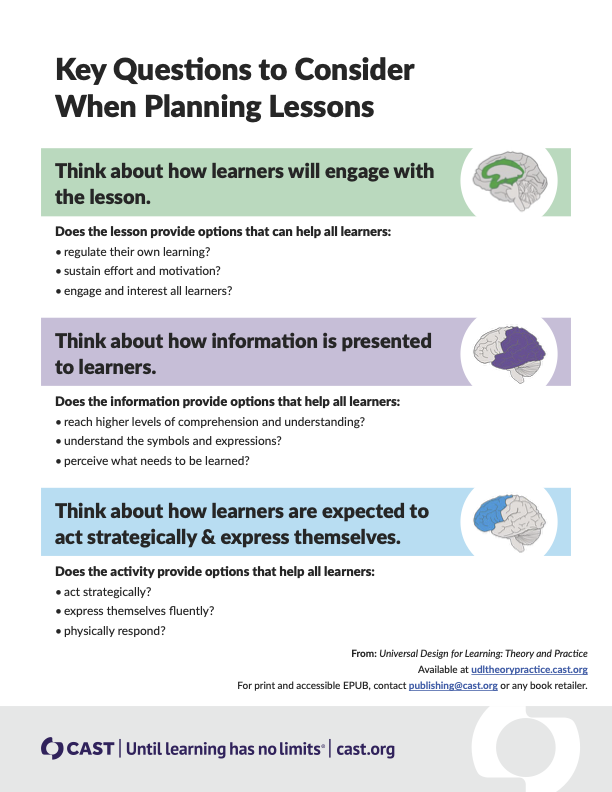A Comprehensive Overview of Universal Design for Learning: Embracing Diversity in Education
Universal Design for Learning (UDL) is a framework for designing educational environments and experiences that are accessible and effective for all learners. Its importance and potential to revolutionize learning stem from several key aspects:
1. Acknowledgment of Diversity: UDL recognizes that learners are highly diverse in their backgrounds, learning styles, abilities, and motivations. Traditional educational models often cater to an ‘average’ student, which doesn’t truly exist. UDL, on the other hand, embraces this diversity and seeks to create learning experiences that are flexible and accommodating to a wide range of learners.
2. Multiple Means of Engagement: UDL emphasizes providing multiple ways to engage students. This is crucial because what motivates and interests one student may not work for another. By offering diverse ways to engage with the material, UDL increases the likelihood that each student will find a way to connect with the content in a meaningful way.
3. Multiple Means of Representation: This principle of UDL involves presenting information and content in different ways. It recognizes that different students have different learning preferences and challenges – some may be visual learners, others might prefer auditory information, and others might need tactile experiences. By diversifying the way information is presented, UDL ensures that all students have an equal opportunity to understand and learn.
4. Multiple Means of Action and Expression**: UDL advocates for providing students with various ways to demonstrate their knowledge and skills. This flexibility allows students to use their strengths and work around their challenges. For example, a student who struggles with writing might be able to demonstrate understanding through a video presentation or a spoken response.
5. Inclusive and Accessible: UDL is inherently inclusive. It aims to be accessible not just to students with disabilities but to all students, including those who are gifted, English language learners, and those from varied cultural backgrounds. This inclusivity is crucial in a globalized and diverse world.
6. Encourages Expert Learning: UDL aims to develop learners who are purposeful, motivated, resourceful, knowledgeable, strategic, and goal-directed. This approach fosters a more profound and comprehensive form of learning where students are not just passive recipients of information but active participants in their learning journey.
7. Use of Technology: UDL leverages technology to enhance learning experiences. Digital tools and resources can be adapted to suit diverse learning needs, making education more accessible and engaging. Technology also allows for innovative approaches to teaching and learning that were not possible in traditional classrooms.
8. Preparation for a Diverse World: By accommodating diverse learning needs and styles, UDL prepares students for the diversity they will encounter in the real world. It teaches adaptability, empathy, and the ability to collaborate with individuals who have different perspectives and abilities.
9. Potential to Reduce Barriers and Close Achievement Gaps: By addressing the varied needs of all learners, UDL has the potential to reduce barriers to learning that can lead to achievement gaps. This is particularly important for students who have traditionally been marginalized in educational settings.
10. Focus on Lifelong Learning: UDL encourages skills and attitudes that are vital for lifelong learning. In a rapidly changing world, the ability to adapt and continue learning is crucial for personal and professional success.
UDL represents a shift from a one-size-fits-all approach to education to a more inclusive, flexible, and effective model. It has the potential to revolutionize learning by making education more accessible, engaging, and effective for all students, regardless of their background or learning style.
Here are the main questions we should ask when planning learning experiences using the UDL:







